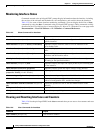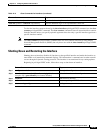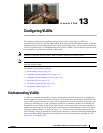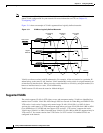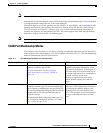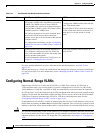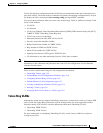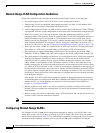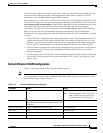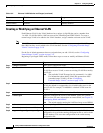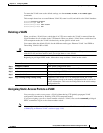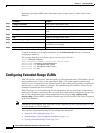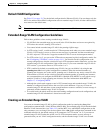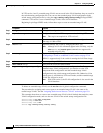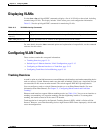
13-6
Catalyst 2960 and 2960-S Switch Software Configuration Guide
OL-8603-09
Chapter 13 Configuring VLANs
Configuring Normal-Range VLANs
Normal-Range VLAN Configuration Guidelines
Follow these guidelines when creating and modifying normal-range VLANs in your network:
• The switch supports 255 VLANs in VTP client, server, and transparent modes.
• Normal-range VLANs are identified with a number between 1 and 1001. VLAN numbers 1002
through 1005 are reserved for Token Ring and FDDI VLANs.
• VLAN configuration for VLANs 1 to 1005 are always saved in the VLAN database. If the VTP mode
is transparent, VTP and VLAN configuration are also saved in the switch running configuration file.
• With VTP versions 1 and 2, the switch supports VLAN IDs 1006 through 4094 only in VTP
transparent mode (VTP disabled). These are extended-range VLANs and configuration options are
limited. Extended-range VLANs created in VTP transparent mode are not saved in the VLAN
database and are not propagated. VTP version 3 supports extended range VLAN (VLANs 1006 to
4094) database propagation. If extended VLANs are configured, you cannot convert from VTP
version 3 to version 1 or 2. See the “Configuring Extended-Range VLANs” section on page 13-10.
• Before you can create a VLAN, the switch must be in VTP server mode or VTP transparent mode.
If the switch is a VTP server, you must define a VTP domain or VTP will not function.
• The switch does not support Token Ring or FDDI media. The switch does not forward FDDI,
FDDI-Net, TrCRF, or TrBRF traffic, but it does propagate the VLAN configuration through VTP.
• The switch supports 128 spanning-tree instances. If a switch has more active VLANs than supported
spanning-tree instances, spanning tree can be enabled on 128 VLANs and is disabled on the
remaining VLANs. If you have already used all available spanning-tree instances on a switch,
adding another VLAN anywhere in the VTP domain creates a VLAN on that switch that is not
running spanning-tree. If you have the default allowed list on the trunk ports of that switch (which
is to allow all VLANs), the new VLAN is carried on all trunk ports. Depending on the topology of
the network, this could create a loop in the new VLAN that would not be broken, particularly if there
are several adjacent switches that all have run out of spanning-tree instances. You can prevent this
possibility by setting allowed lists on the trunk ports of switches that have used up their allocation
of spanning-tree instances.
If the number of VLANs on the switch exceeds the number of supported spanning-tree instances,
we recommend that you configure the IEEE 802.1s Multiple STP (MSTP) on your switch to map
multiple VLANs to a single spanning-tree instance. For more information about MSTP, see
Chapter 17, “Configuring MSTP.”
• When a switch in a stack learns a new VLAN or deletes or modifies an existing VLAN (either
through VTP over network ports or through the CLI), the VLAN information is communicated to all
stack members.
• When a switch joins a stack or when stacks merge, VTP information (the vlan.dat file) on the new
switches will be consistent with the stack master.
Note Stacking is supported only on Catalyst 2960-S switches running the LAN base image.
Configuring Normal-Range VLANs
You configure VLANs in vlan global configuration command by entering a VLAN ID. Enter a new
VLAN ID to create a VLAN, or enter an existing VLAN ID to modify that VLAN. You can use the
default VLAN configuration (Table 13-2) or enter multiple commands to configure the VLAN. For more
information about commands available in this mode, see the vlan global configuration command



